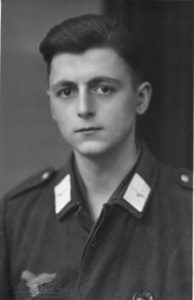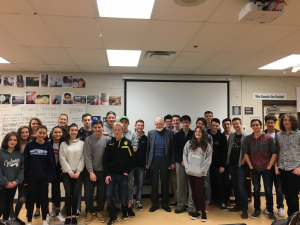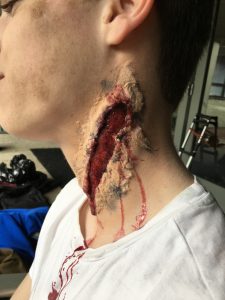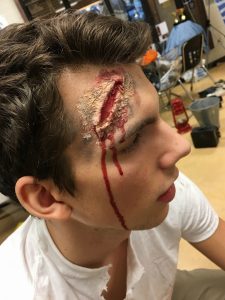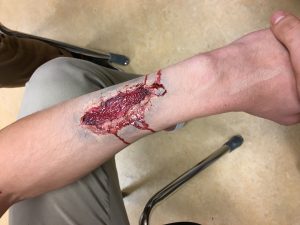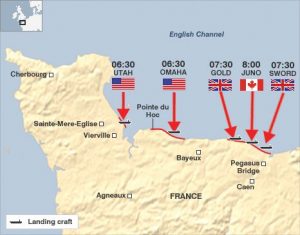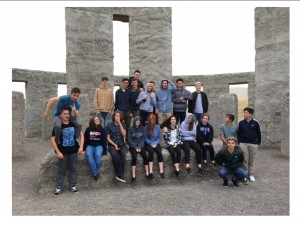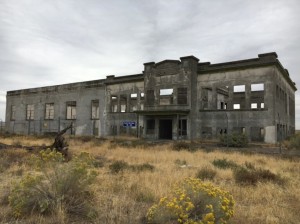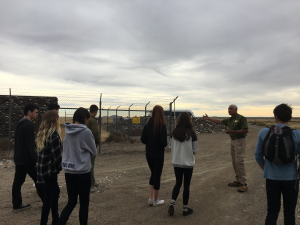Violence is something as a society most people frown upon. However there are still many people out there in the world who resort to violence as a solution. Others who claim to be non-violent and fight against acts like that are still prone to thoughts of violence and even have outbursts of their own from time to time. Does this mean every person can ensue violence or is it in our human nature to be violence?
 The book Lord of the Flies draws upon the inner nature of savageness that lies within each of us. Being violent is something that couples well with savagery and in fact most savages are quite violent as we see with the character Jack. “Jack transferred the knife to his left hand and smudged blood over his forehead as he pushed down the plastered hair.” – Lord of the Flies. This was at the very beginning of the story, before Jack turns completely savage and we see that even early on, he had an underlying savage and violent manner. Before landing on the island in the story the Lord the Flies, the boys were proper young British boys who obeyed all the rules and stuck to the typical format of a non-violent society. As the days passed by on the island the boys began killing animals for food, which they all found a thrill in, “(Jack) tried to convey the compulsion to track down and kill that was swallowing him up,” – Lord of the Flies. The more the boys killed for food, the more violent they became. They started killing the animals on the island just for the fun of it. This led to them even becoming violent towards one another, and killing their own. But how could these young British boys turn into complete violent savages so quickly? Does this mean that it is in our human nature to be violent?
The book Lord of the Flies draws upon the inner nature of savageness that lies within each of us. Being violent is something that couples well with savagery and in fact most savages are quite violent as we see with the character Jack. “Jack transferred the knife to his left hand and smudged blood over his forehead as he pushed down the plastered hair.” – Lord of the Flies. This was at the very beginning of the story, before Jack turns completely savage and we see that even early on, he had an underlying savage and violent manner. Before landing on the island in the story the Lord the Flies, the boys were proper young British boys who obeyed all the rules and stuck to the typical format of a non-violent society. As the days passed by on the island the boys began killing animals for food, which they all found a thrill in, “(Jack) tried to convey the compulsion to track down and kill that was swallowing him up,” – Lord of the Flies. The more the boys killed for food, the more violent they became. They started killing the animals on the island just for the fun of it. This led to them even becoming violent towards one another, and killing their own. But how could these young British boys turn into complete violent savages so quickly? Does this mean that it is in our human nature to be violent?
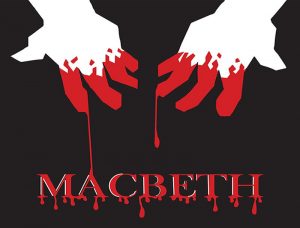 As much as we try to be nice and civil to everyone and everything in our world, people still tend to drift back to the underlying instinct within them to be violent. Being violent doesn’t always mean you are conducting a physical act of violence. It could also mean you are saying or even writing violent ideas. In our society today we see how popular books and movies that are violent or have violence in them are, but we forget to look back on the past entertainment as well. The play Macbeth was gruesome, evil, and violent. It’s not just today’s society that uses violence for entertainment. In the time of Macbeth and even before that things for almost more violent then they are now. Does this mean people have always been violent? In the story of Macbeth we see how the main character Macbeth fights against his beliefs and listens to his wife, Lady Macbeth, into killing the king. This he immediately feels bad about afterwards but he still went against his own thoughts and beliefs to inflict and act of violence upon someone else, and therefor, kills another. Lady Macbeth although doesn’t inflict the initial act of violence, is the one who conducts it. This shows us that there are more then one way to be violent, not just with physical actions.
As much as we try to be nice and civil to everyone and everything in our world, people still tend to drift back to the underlying instinct within them to be violent. Being violent doesn’t always mean you are conducting a physical act of violence. It could also mean you are saying or even writing violent ideas. In our society today we see how popular books and movies that are violent or have violence in them are, but we forget to look back on the past entertainment as well. The play Macbeth was gruesome, evil, and violent. It’s not just today’s society that uses violence for entertainment. In the time of Macbeth and even before that things for almost more violent then they are now. Does this mean people have always been violent? In the story of Macbeth we see how the main character Macbeth fights against his beliefs and listens to his wife, Lady Macbeth, into killing the king. This he immediately feels bad about afterwards but he still went against his own thoughts and beliefs to inflict and act of violence upon someone else, and therefor, kills another. Lady Macbeth although doesn’t inflict the initial act of violence, is the one who conducts it. This shows us that there are more then one way to be violent, not just with physical actions.
Not only does violence occur in stories, but it happens day to day in difference societies all over the world. Especially in the past. World War Two was one of the most violent and savage wars there was. As humans in the past, and sometimes still today, we resorted to violence and war as a way to solve our problems and disputes. Instead of choosing to solve things in a civil manner, our human nature chose to be violent as if that were a better way to solve things. Wars are generally some of the most violent times in history, but sometimes the violence carries on after the war once soldiers have returned home. In the bombed-out ruins of Europe’s cities, feral gangs scavenge for food. Old men are murdered for their clothes, their watches or even their boots. Women are mercilessly raped, many several times a night. And the wrong surname, even the wrong accent, can get you killed. for hundreds of millions of Europeans, many of them now gentle, respectable pensioners, this was daily reality in the desperate months after the end of World War II. The violent acts and thoughts continued on with them after the war had finished and although for most when they left for the war not wanting to kill, they came back with a blood thirst for violence. Maybe this violent nature was always there for them.

The way we act and the way we think may differ when it comes to violence. Since society has told us that violence is bad we try to erase those thoughts and forget about them, for some this is more challenging to achieve and they end up being violent. This means that no matter how much you may hide it, everybody has violent thoughts and violent outbursts no matter how small they may be. Therefor, violence is in our human nature, no matter how much we try to fight it, there will always be an underlying urge to be violent in some sort of way.
 I was drawn to the movie, Hacksaw Ridge, because it focused on the strength and integrity of one man who was determined to stick to his beliefs at the same time as supporting his country. Hacksaw Ridge also intrigued me because it left nothing to the imagination. War was not glorified in this depiction of the bloody battle. The movie portrayed the reality and horrors of war quite graphically. Although the first hour of the movie was slow and drawn out, I realized how necessary the story build up was in order to truly appreciate the incredible act of bravery that Desmond Doss showed. He not only saved 75 wounded soldiers that night, he modelled and taught the men to follow what true dedication to ones own convictions can accomplish.
I was drawn to the movie, Hacksaw Ridge, because it focused on the strength and integrity of one man who was determined to stick to his beliefs at the same time as supporting his country. Hacksaw Ridge also intrigued me because it left nothing to the imagination. War was not glorified in this depiction of the bloody battle. The movie portrayed the reality and horrors of war quite graphically. Although the first hour of the movie was slow and drawn out, I realized how necessary the story build up was in order to truly appreciate the incredible act of bravery that Desmond Doss showed. He not only saved 75 wounded soldiers that night, he modelled and taught the men to follow what true dedication to ones own convictions can accomplish.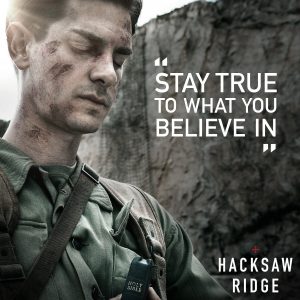
 This is an assignment called 321. On the left side of the column we wrote 3 thoughts we had about World War Two before we learned about it in depth. Then 2 questions we had. And finally, a metaphor about World War Two. On the right side of the collum we didn’t the same thing, although it was after we learned about the topic. At the bottom is a connection, or a bridge, between our two thoughts from before and after learning about the topic in depth.
This is an assignment called 321. On the left side of the column we wrote 3 thoughts we had about World War Two before we learned about it in depth. Then 2 questions we had. And finally, a metaphor about World War Two. On the right side of the collum we didn’t the same thing, although it was after we learned about the topic. At the bottom is a connection, or a bridge, between our two thoughts from before and after learning about the topic in depth.






